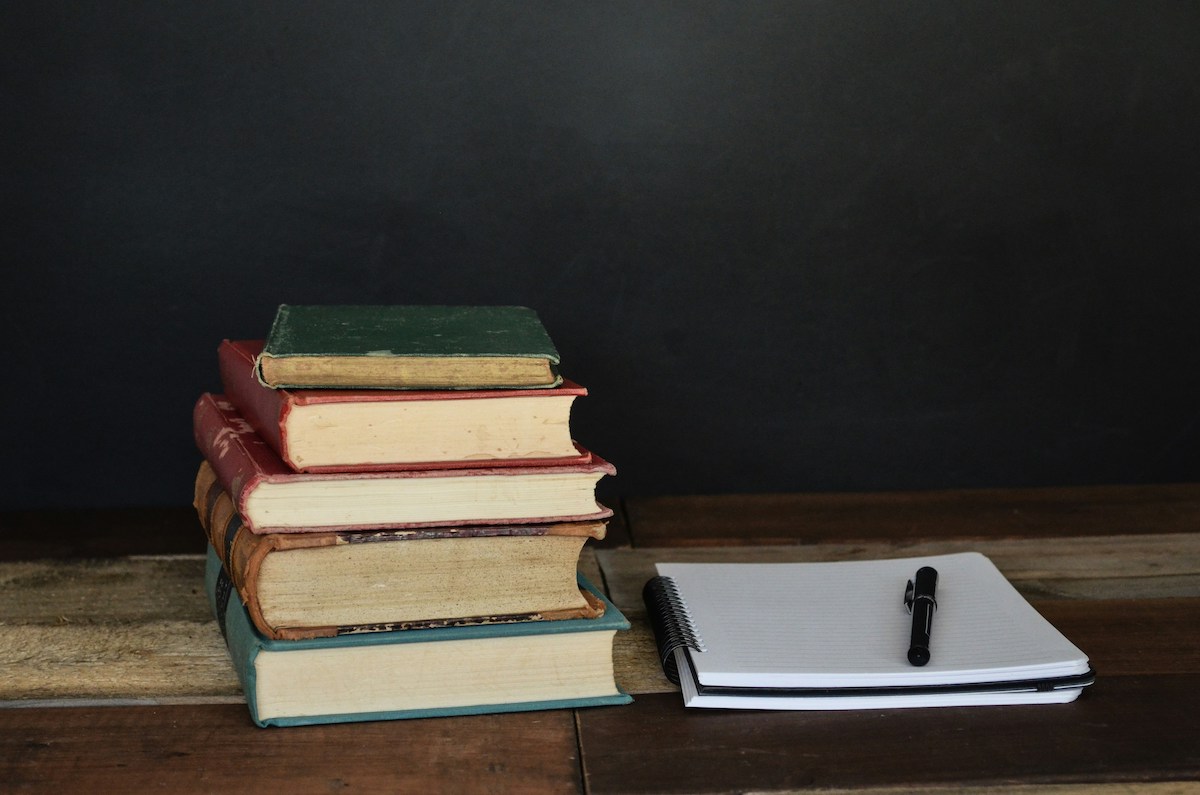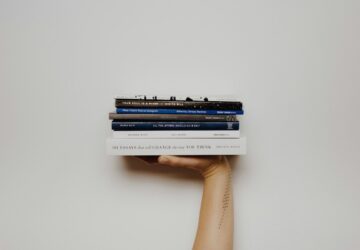
The Visual Language of Books: How Covers Communicate Complexity
At thumbnail size—often 100–160 pixels wide on retail grids—a cover must communicate genre, tone, and complexity before a reader can zoom in. The difference between a muddled thumbnail and a crisp focal point can determine whether a title gets a click, a pickup, or a pass.
If you want a practical method for turning ideas into visual signals, this guide shows how color, typography, and composition encode layered meaning, with step-by-step instructions, concrete thresholds, and examples from classic and contemporary covers. By the end, you’ll know how to design or commission a cover that speaks fluently: The Visual Language of Books: How Cover Design Communicates Complexity.
The Visual Language Of Books: How Cover Design Communicates Complexity
Color carries plot, pace, and emotional temperature. Low-saturation, cool hues (blues/greens) often signal reflection or distance; high-saturation warms (reds/oranges) imply urgency or conflict. Complementary pairs (e.g., blue/orange) read as dynamic tension, while analogous ranges (blue/teal/navy) feel cohesive and measured. Make legibility non-negotiable: ensure title-to-background contrast meets at least a 4.5:1 ratio for small text, a standard borrowed from accessibility that also improves thumbnail readability.
WCAG 2.1: Minimum 4.5:1 contrast recommended for small text; higher contrast improves legibility at small sizes.
Typography frames complexity into a voice. High-contrast serifs (Didone, transitional) suggest literary rigor or historical depth; geometric sans-serifs feel analytic and contemporary. Condensed faces pack long titles but can choke counters at small sizes; semibold weights with generous tracking perform better in thumbnails. A quick rule: if the title remains readable when your layout is scaled to 10% (simulating a small retailer thumbnail), your weight and spacing are likely adequate.
Composition maps structure. Symmetry conveys order and authority (fit for classical history or legal analysis), while asymmetry suggests movement or rupture (useful for thrillers or disruptive non-fiction). Complexity increases with layering: foreground focal point, midground texture, and background field, each with clear visual hierarchy. Keep one dominant focal region (roughly 60% visual weight), one secondary (30%), and one accent (10%); this 60/30/10 distribution curbs visual noise while still signaling richness.
Imagery and metaphor compress arguments. The Great Gatsby’s glowing, disembodied eyes foreshadow surveillance and longing. House of Leaves leans on labyrinthine typography to encode disorientation. Non-fiction examples like Thinking, Fast and Slow (a pencil with a worn eraser) and Sapiens (a single fingerprint or red dot in some editions) depend on minimalist metaphors: one object that stands for the entire thesis. Pick imagery that can be drawn in five strokes—if it reads as a silhouette, it will survive small sizes and busy environments.
Mapping Design To Narrative And Argument Structure
Translate the book’s complexity into visual mechanics. Temporal complexity (multiple timelines) can be shown with stratified bands or interleaved stripes. Structural complexity (braided narratives) invites interlocking forms or braided typographic arrangements. Ethical complexity (ambiguous motives) favors visual paradox: a serene palette interrupted by a violent accent, or type that is partly obscured yet legible. Mechanically, ask: what tension governs the book—order vs chaos, agency vs fate, personal vs systemic—and assign each pole a visual attribute (e.g., symmetrical grid vs slanted axis).
Genres share visual defaults, but they can be bent. Literary fiction trends toward restraint: ample whitespace, elegant serifs, soft contrast (e.g., recent Sally Rooney covers use clean sans-serifs and muted primaries to express frankness and intimacy). Thrillers rely on stark contrast, oblique diagonals, and tight crops (think of the yellow/black punch of The Girl with the Dragon Tattoo). Popular non-fiction often foregrounds bold typography with a single chroma-forward field color: the bright orange of The Subtle Art of Not Giving a F*ck is a case study in instant shelf visibility.
Use case studies as decision checks. Catch-22’s blocky, high-readability typography and flat-color silhouette telegraph absurdity and military bureaucracy in one move. The Godfather’s marionette hand distills control and puppetry; you understand power dynamics at a glance. For modern redesigns, Elena Ferrante’s Neapolitan novels adopt pale photographic fields with small, elegant type—softness and distance that mirror memory and female interiority, while a series system (consistent type and composition) encodes continuity across volumes.
Plan for language and market shifts. Title length can expand by 15–40% in translation; choose typefaces with extended Latin, Cyrillic, and accents. Avoid script faces if you anticipate multilingual editions. When the title is long, move complexity into the image and keep the type calm; when the title is short, let type carry more personality. For right-to-left markets, mirror compositional flow so the focal point leads from the reading start.
Step-By-Step Workflow To Build A Cover That Carries Complexity
Step 1: Clarify the message hierarchy. Write a 12-word logline and a 6-word mood phrase. Reduce the argument into two poles (e.g., human vs machine). Assign each pole a visual attribute (color family, geometry, texture). Step 2: Audit the competitive shelf—20 comparable titles from the last 3 years. Document their dominant color, type style, and focal form; identify a whitespace your cover can claim (e.g., “no one in this shelf uses cool pastels with slab serifs”). Step 3: Draft a constraints list: trim size, print method, longest market title variant, series requirements, and retailer thumbnail width. Constraints drive creative clarity.
Step 4: Build a palette with three hues (one field, one type, one accent) and specify values in CMYK and RGB from the start to reduce conversion surprises. Step 5: Select a type system: one display face for the title, one utility face for subtitle/author. Test title at 10% scale; adjust weight/tracking until it reads. Step 6: Choose a composition: centered icon for authority, off-axis slash for disruption, grid for systems thinking. Step 7: Create three divergent sketches that vary one major variable each (color, composition, or type). Keep constants: same title and subtitle set in the same location to isolate what changes.
Step 8: Thumbnail stress test: export each sketch at 120 pixels wide and test on a cluttered background (screenshot of a retailer grid). If it doesn’t read, increase contrast, simplify shapes, or reduce word count on the cover. Step 9: Five-second recall test with 10–20 target readers: show a thumbnail for five seconds, ask what they remember (title, color, mood). If recall of title is under 70%, adjust weight/contrast or reduce competing elements. Step 10: Prepress proof: add 0.125-inch bleed on all sides, keep critical text inside a 0.25-inch safe area, and calculate spine width using the printer’s pages-per-inch (commonly 400–600 PPI depending on paper; a 300-page book on 500 PPI yields a 0.6-inch spine). Step 11: Export workflows: RGB for digital mockups; convert final print PDF to CMYK with the printer’s ICC profile. Keep total ink coverage within the printer’s limit (often 240%–300% on uncoated stocks) to prevent setoff. Step 12: Final check for hierarchy: if every element can be removed except one and the concept still reads, your cover likely communicates under pressure.
Practical Constraints, Trade-Offs, And Testing
Production decisions shape what complexity survives. Common trim sizes include 5 x 8, 5.5 x 8.5, and 6 x 9 inches; smaller trims magnify type density challenges. Maintain 300 dpi at print size; vector type and shapes remain crisp at any scale, so avoid rasterizing text. Metallic foil, embossing, and spot UV can carry metaphoric weight (e.g., gilding for themes of value or deceit) but add cost and timelines; finishes often make economic sense at higher runs, while short digital runs favor ink-only solutions. Always request a physical proof if using special finishes; metallics and varnishes look different than on-screen simulations.
Budget and durability are linked. Matte lamination is elegant but shows scuffs; gloss resists handling but can glare under bright lights. If your cover relies on deep, flat blacks, specify a rich black build suited to the stock and limit coverage near the spine to reduce cracking. Edge cases: large solid fills on uncoated stock can show banding; use subtle noise or texture to mask artifacts. For paperbacks with dark spines, white type needs robust weight and contrast to read on shelf.
Accessibility expands the audience. Approximately 8% of men of Northern European descent have red–green color vision deficiency; avoid relying on red/green contrasts to communicate key distinctions. Pair hue differences with lightness differences so contrasts survive color-blind viewing. Ensure the title’s letterforms have open counters and generous spacing; overly condensed faces and hairline serifs collapse in poor lighting. For e-retailers that crop to squares, keep vital information away from corners; center or vertically align the focal point so side-cropping doesn’t remove meaning.
Design for systems, not singles. For series, define a grid, type lockup, and an element to vary (color family, central icon, or texture). Aim for about 70% shared structure and 30% variation so recognition beats novelty at a glance. For reissues, decide what to preserve: core metaphor, color family, or type tone. Modernized classics often keep the central icon (e.g., Gatsby’s gaze or a symbolic motif) while refreshing palette and spacing to meet contemporary legibility standards.
Conclusion
To express complexity on a cover, pick one focal metaphor, articulate a clear hierarchy (color, type, composition), and prove legibility at thumbnail scale before you chase nuance. If you’re torn between two directions, choose the one that still communicates when reduced to 10% size and viewed for five seconds: clarity first, complexity second—because the best covers let readers feel the argument before they ever read it.
Recommended for you

Reading as Mental Design: How Books Shape the Way We Think
Flip open a book and you trigger a design studio in your head: eyes fixate for roughly 200–250 ms per word group, 10–15% of eye movements jump backward to verify links, and your working memory holds about four “chunks” while you assemble a model of what the text describes. Reading as a Form of Mental […]

Design Principles for Beautiful and Readable Network Maps
Put 2,000 nodes and 8,000 edges on a canvas and most viewers will see spaghetti. Use layout constraints, color discipline, and geometry tuned to human perception, and clusters, bridges, and outliers become legible in under five seconds—the difference between guesswork and insight. This guide distills Design Principles for Beautiful and Readable Network Maps into practical […]

The Future of Reading: How AI Changes Book Discovery and Enjoyment
Libraries logged hundreds of millions of digital book checkouts last year, while neural text-to-speech can now produce a clean, hour-long audiobook in minutes. Meanwhile, recommendation models trained on billions of reading interactions quietly shape what appears in your “Because you liked…” rows. The future of reading is no longer just about pages and covers; it’s […]

How to Find a Hobby That Truly Fits You
Give a hobby 21 days and 90 minutes per week, and you will learn more about your motivation, stress triggers, and attention than a dozen personality quizzes. A few concrete moves—testing a novel, a 5‑aside game, or a few low-stakes rounds of online gameplay—can reveal which activities calm your nervous system, sharpen focus, and actually […]

Turning Data into Stories: The Psychology of Visual Complexity
A network map with 1,200 nodes feels mesmerizing until your eyes start to swim; a five-bar chart can feel banal yet instantly graspable. The gap between awe and overload is not just taste—it’s how our visual and cognitive systems negotiate complexity, novelty, and control. If you want to use complex visuals to create connection and […]

Visualizing Complexity: The Art of Making Networks Understandable
A 15,000-node protein interaction map and a 50,000-flight air-route map look like hairballs until the right questions, filters, and layouts pull structure from noise. Visualizing Complexity: The Art of Making Networks Understandable is not about drawing everything; it is about deciding what deserves ink, what must be computed first, and what the audience can actually […]

How to become productive
You can’t outwork a broken system. Knowledge workers routinely lose 60–120 minutes a day to context switching, unclear priorities, and manual tasks that smart tools could finish in seconds. The fix is not more hours; it’s a compact operating system that aligns focus, energy, and technology. If your intent is to learn how to become […]

Deep Reading in a Digital World: Stay Focused in an Age of Distraction
Your attention is outnumbered: surveys put daily phone pickups in the 50–150 range and notifications in the dozens, while a single interruption can cost several minutes to regain depth. If you want Deep Reading in a Digital World: How to Stay Focused in the Age of Distraction, you need a deliberate method, not willpower. This […]
